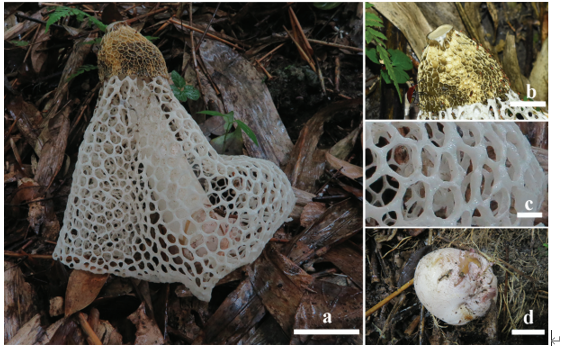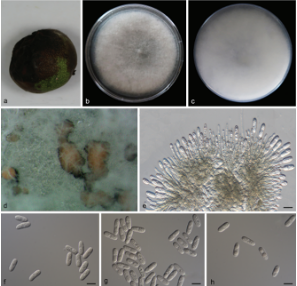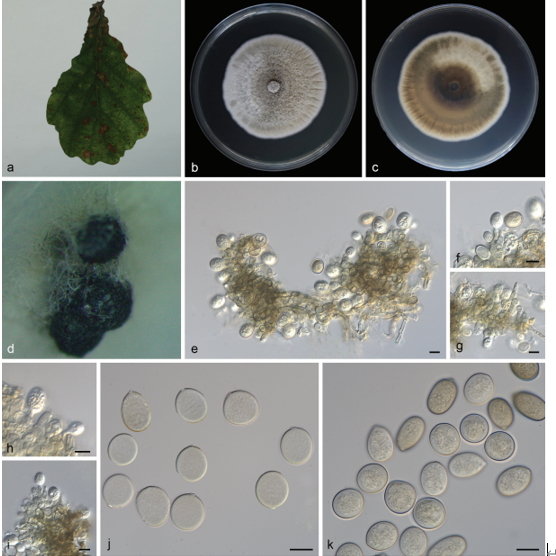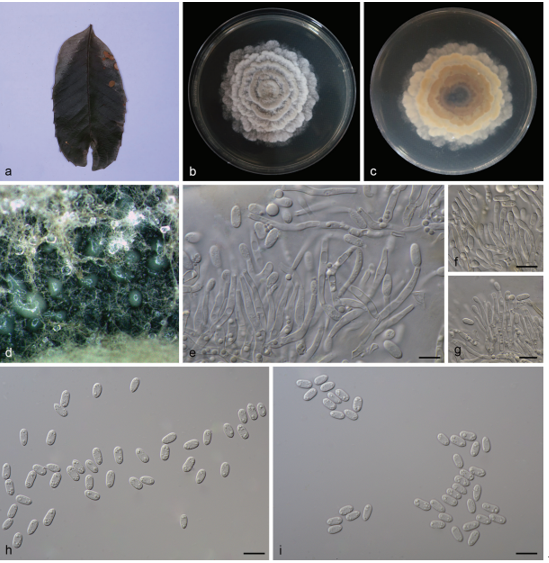Capillidium adiaeretum (Drechsler) B. Huang & Y. Nie, comb. nov. 2020
MycoBank No MB831602
Holotype: China, Jiangsu Province, Nanjing City, Laoshan Forest Park, 32°5'58"N, 118°35'53"E, Plant detritus, 1 Dec 2018, Y. Nie and Y. Gao, HMAS 248358, culture CGMCC 3.15888 (=RCEF 6550).
Morphological description
Colonies on PDA at 25 °C after 3 d, white, reaching ca. 7–10 mm in diameter. Mycelia colourless, 3–4.5 μm wide. Primary conidiophores, colourless, unbranched and producing a single globose conidium with widening upwards; they offer a pronounced dimensional contrast with the mycelial filaments, extending to a length of 50–210 μm into the air, 3–25 μm wide. Primary conidia forcibly discharged, colourless, globose, measuring 15–45 μm in greatest length and 13–42 μm in total width, including a basal papilla 2–6 μm high and 5–17 μm wide. After discharging on to 2% water-agar, similar and smaller secondary conidia arise from primary conidia, two generations of multiple spherical units forming on the parent globose conidia Microconidia only formed from the second set, 5–12 × 9–10 μm. Capilliconidia formed readily from discharged microconidia, 16–24 × 5–6 μm. Chlamydospores formed within the substratum, colourless, globose to ellipsoidal, 13–40 × 15–45 μm.
Habitat: unidentified
Distribution: china,America
GenBank Accession: unidentified
Notes: The species was firstly reported from America (Drechsler 1953a). The extype living culture is ATCC 12589 isolated by Drechsler (1953a). It is mainly characterised and differs from other Capillidium species by its ability to form both microconidia and capilliconidia (Callaghan et al. 2000). The Chinese specimen CGMCC 3.15888 clusters completely (100/1.00) with an isotype ARSEF 451 (98% sequence similarity in nucLSU) and fits well with its morphological descriptions. It is reported in China for the first time.
Reference: Nie Y, Yu D-S, Wang C-F et al. (2020) A taxonomic revision of the genus Conidiobolus (Ancylistaceae, Entomophthorales): four clades including three new genera.
Capillidium adiaeretum a colony on PDA after 3 d at 25 °C b mycelia c, d primary conidiophores bearing primary conidia e, f primary conidia g Production of secondary conidia h first stage of forming microconidia i second stage of forming microconidia j, k ellipsoidal secondary conidia arising from slender conidiophores l chlamydospores. Scale bars: 10 mm (a); 100 μm (b); 20 μm (c–l).









